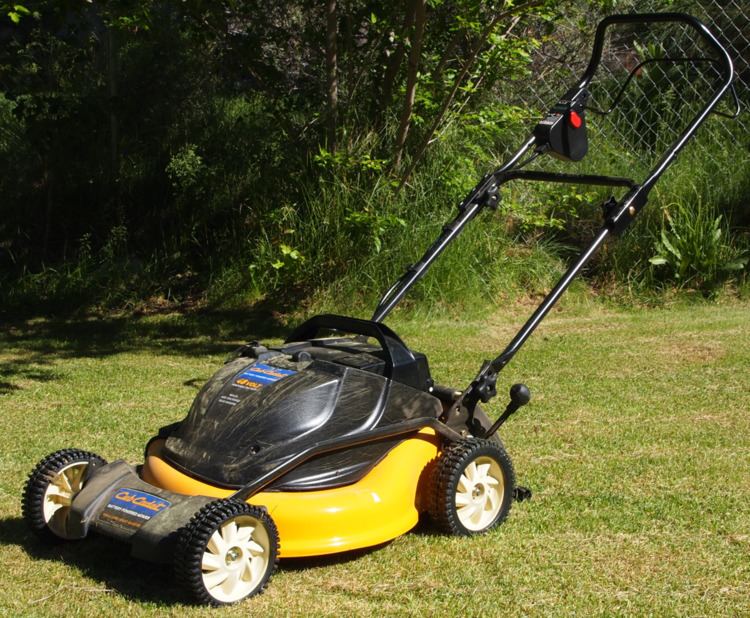 | ||
Grasscycling refers to an aerobic (requires air) method of handling grass clippings by leaving them on the lawn when mowing.
The term is a portmanteau combining "grass" and "recycling", and had come into use by at least 1990 as part of the push to reduce the huge quantities of clippings going into landfills, up to half of some cities' summertime waste flow, as 1,000 square feet (93 m2) of lawn can produce 200 to 500 pounds (90 to 225 kg) of clippings a year.
Because grass consists largely of water (80% or more), contains little lignin, and has high nitrogen content, grass clippings easily break down during an aerobic process (comparable to composting) and returns the decomposed clippings to the soil within one to two weeks, acting primarily as a fertilizer supplement and, to a much smaller degree, a mulch. Grasscycling can provide 15 to 20% or more of a lawn's yearly nitrogen requirements. Proponents also note that grasscycling reduces the use of plastic bags for collecting yard waste and reduces trips to the curb or landfill to haul waste.
Optimal grasscycle techniques include:
Although a mulching mower can make grass clippings smaller, one is not necessary for grasscycling.
